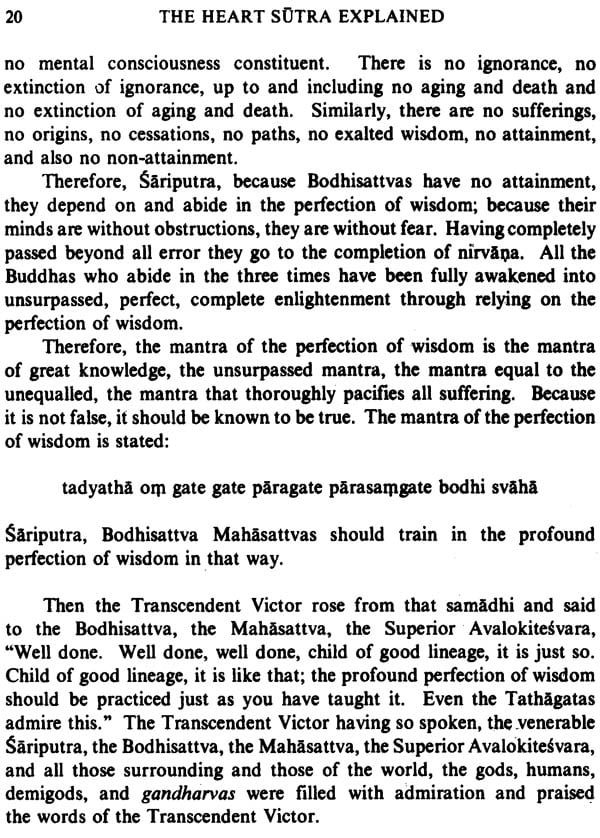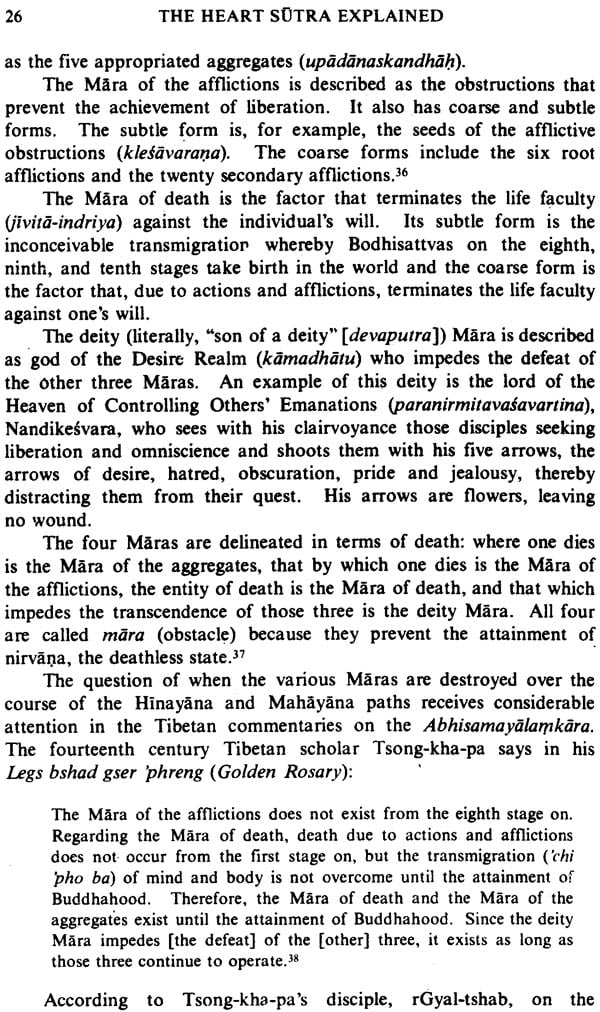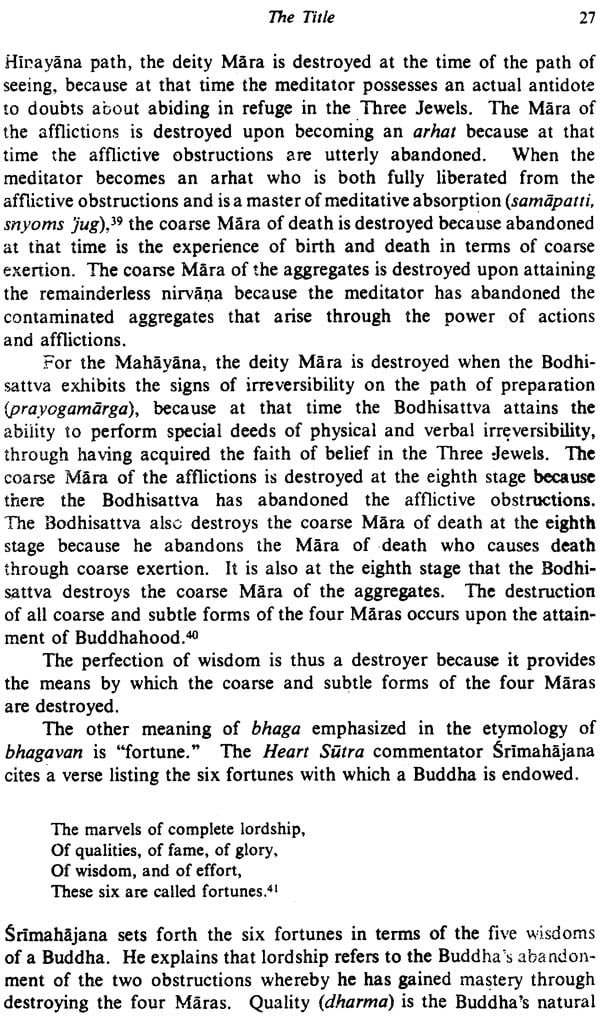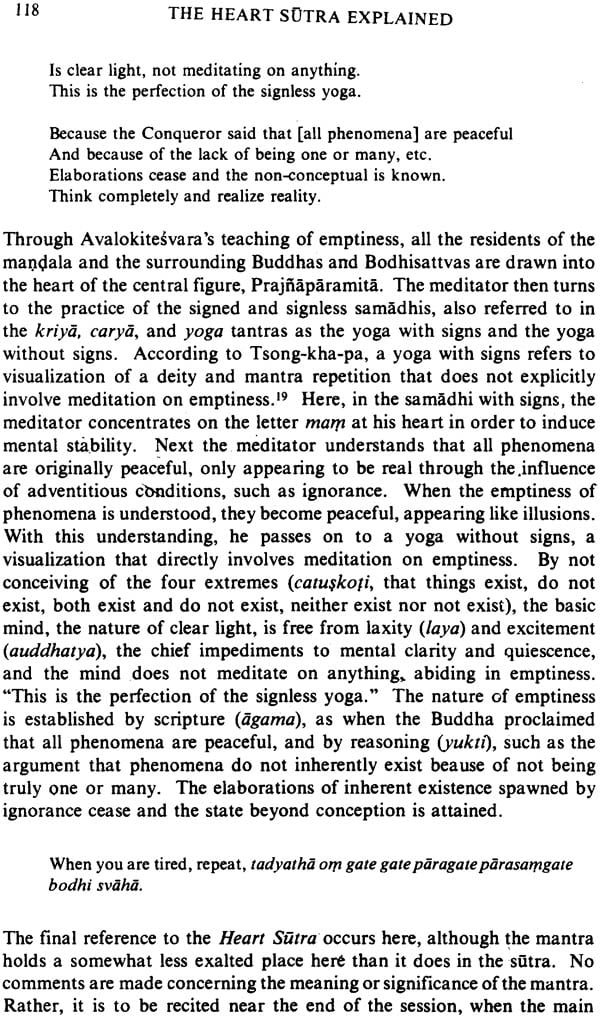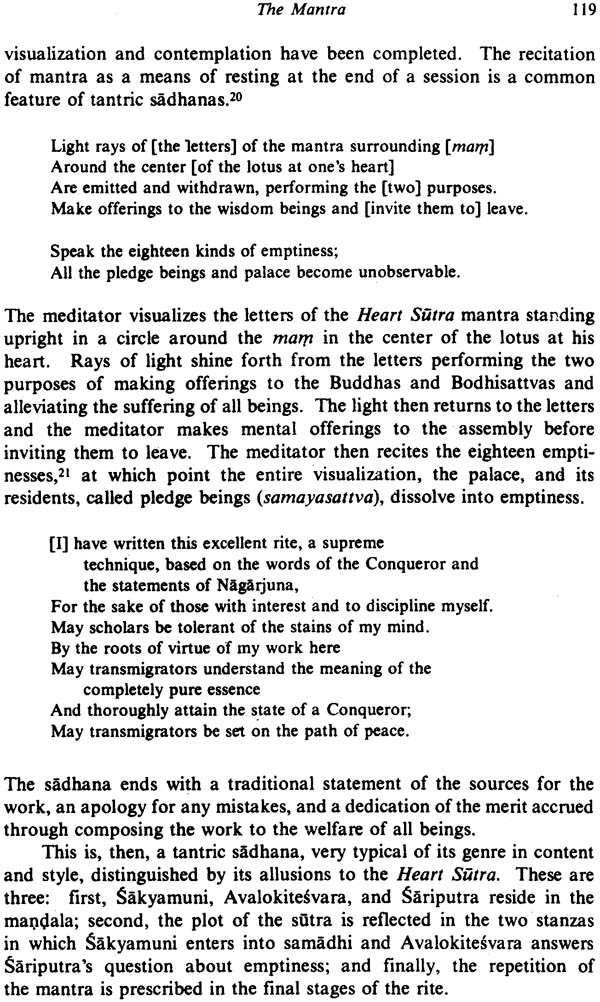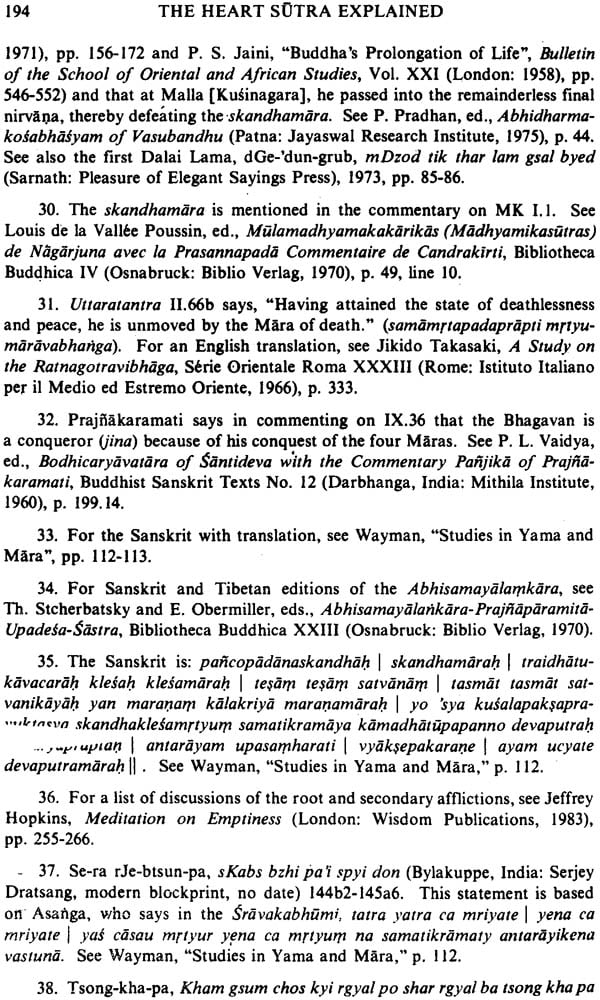
The Heart Sutra Explained
Book Specification
| Item Code: | NAU606 |
| Author: | Donald S. Lopez, Jr. |
| Publisher: | Sri Satguru Publications |
| Language: | English |
| Edition: | 1990 |
| ISBN: | 8170302382 |
| Pages: | 245 |
| Cover: | HARDCOVER |
| Other Details | 9.00 X 6.00 inch |
| Weight | 360 gm |
Book Description
Reknowned for its terse declaration of the perfection of wisdom, the Heart Sutra is the most famous of Buddhist scriptures. The author draws on previously unexamined commentaries, preserved only in Tibetan, to investigate the meanings derived from and invested into the Sutra during the later period of Indian Buddhism.
The Heart Sutra Explained offers new insights of "emptiness and form", and on the mantra, "gate gate paragate parasamgate bodhi svaha", and on the synthesis of Madhyamika, Yogacara, and tantric thought that characterized the final period of Buddhism in India. It also includes complete translations of two nineteenth-century Tibetan commentaries demonstrating the selective appropriation of Indian sources.
"It makes a major contribution to Buddhist studies by bringing forth new and important material to contextualize one of the most beloved and wellknown Buddhist texts, the Heart sutra. It does so in a manner that is both scholarly and readable.
The Heart Sutra is perhaps the most famous Buddhist scripture.' Its cryptic delineation of the meaning of emptiness and its radical economy of expression have exercised a fascination over the minds of Buddhist thinkers in India, China, Japan, Korea, Tibet, and Central Asia. Over seventy manuscripts of the sutra were unearthed at Tunhuang. The Heart Sutra has evoked commentaries from many of the pivotal figures in the history of Buddhist thought, including Kamalasila, Atisa, Fa-tsang, K'uei-chi, Kukai, and Hakuin Zenji.
The Heart Sutra exists in two versions, the more extensive adding a prologue and epilogue to the briefer form. But even in its extensive version, the Heart Sutra is the shortest of the major Buddhist sutras, and this brevity accounts in part for its great popularity. The players are few and formidable: Sakyamuni Buddha, Avalokitesvara, and Sariputra, with Prajnaparamita, the mother of the Buddhas, silently present. As with so many sutras, the structure is one of question and answer, but here only one question is asked, "How does one practice the perfection of wisdom?" Avalokitesvara's answer, given first in one sentence and then expanded, contains references to all the major categories of Buddhist philosophy, proclaiming that they do not exist. Ingrained in his answer are the two most famous lines of this most famous of sutras. The first is the potent and problematic declaration, "Form is emptiness; emptiness is form." The other is the mantra that culminates Avalokitesvara's instruction, "gale gate paragate parasamgate bodhi svaha. These two lines are considered at length in the chapters that follow.
The meaning of the Heart Sutra has always seemed elusive to its readers, as is evident from widely divergent doctrines discovered in it by commentators. Speaking of some of the Chinese and Japanese commentaries, Edward Conze observed that "they tell us more what the text meant to them within their own culture than what the Indian original intended to convey. It was Conze's view that this original meaning could be discovered in the seven Indian commentaries that remain extant in Tibetan translation (or at least six of them; he disapproved of Vimalamitra's commentary). It has been noted, however, that, "A text always has several epochs and reading must resign itself to that fact,"4 so that the endeavor to determine "what the Indian original intended to convey" must always .remain futile. Nevertheless, it is the Indian commentaries on the Heart Sutra that concern us here.
One purpose of this study is to attempt to discern how the Heart Sutra was variously understood during the Pala Dynasty, which ruled Bengal from c. 750-1155 and Bihar from c. 750 until the Muslim invasions of 1199. It was during this period that Buddhist thought in India effectively came to an end. All of the seven extant Indian commentaries appear to have been composed during this period, the earliest probably being that of Kamalasila (c. 740-795) and the latest that of Mahajana (11th cent.). If Conze's dating of the Heart Sutra at 350 C.E. is accepted, then these commentaries were written some five centuries after the sutra. During these centuries the major Mahayana sastras appeared that shaped the character of late Indian Buddhist thought: the works of Asanga and Vasubandhu, of Dignaga and Dharmakirti, of Maitreyanatha, of Bhavaviveka and Candrakirti. This half-millennium also saw the rise of tantric Buddhism. The Indian commentators were writing in an epoch quite different from that of the author of the sutra. Nonetheless, it was a time in which the Prajnaparamita sutras continued to enjoy great popularity, as attested by the account of the reign of Pala King Dharmapala by the Tibetan historian Taranatha.
The authors of the commentaries were scholars who knew the Mahayana sutras and sastras and, therefore, were well-versed in Madhyamika and Yogacara philosophy, in the Hinayana and Mahayana abhidharma, in the delineations of meditative praxis that appear in works like the Sravakabhumi, in the tathagatagarbha doctrines, in the elaborate delineations of the Hinayana and Mahayana paths as set forth in the Abhisamayalamkara and its commentaries, and in tantric thought. These are the contexts they bring to their understanding of the Heart Sutra and which they project onto it.
Edward Conze distinguished four periods in the development of the Prajnaparamita literature: (1) the elaboration of the basic text (ca. 100 B.C. to 100 C.E.), (2) the expansion of the text (ca. 100 C.E. to 300 C.E.), (3) the restatement of the doctrine in short sutras and verse summaries (ca. 300-500), and (4) the period of tantric influence.6 Conze placed the composition of the Heart Sutra in the third period, at about 350 C.E., although others would date it two centuries earlier: The "basic text" to which Conze refers is the Perfection of Wisdom in 8000 Lines (Astasahasrikaprajnaparamitasutra), the oldest portions of which are generally considered to be among the earliest wisdom scriptures of the various movements in Indian Buddhism that came to be known as the Mahayana.8 One view is that from this prototype there grew, through a process of interpolation, duplication, and iteration, the longer versions of the Prajnaparamita, such as those in 18,000, 25,000, and 100,000 lines. This was followed by a period of contraction and distillation, of which the Heart Sutra and the Diamond Sutra are the best examples, although it is in the Prajnaparamita sarvatathagatamata ekalsara (The Perfection of Wisdom in One Letter, the Mother of All Tathagatas, that letter being a) that the process of contraction seems to have reached its logical conclusion. Traditional accounts of the rise of the Mahayana do not, of course, follow this chronology. All the Prajnaparamita sutras were considered the word of the Buddha (buddhavacana), either being actually spoken by Sakyamuni or the speaker being directly empowered by him (as is the case with the Heart Sutra). Thus, the prologues of the sutras report that the Prajnaparamita sutras were set forth by the Buddha on Vulture Peak in what the gods in the 8000 declared to be the second turning of the wheel of the doctrine,9 reinterpreting and superseding that delivered at the deer park in Sarnath. (The teaching of the second wheel was later held to be provisional by the Yogacarically inclined authors of the seventh chapter of the Samdhinirmocanasutra, in which the third turning of the wheel is described.)10 According to the Tibetan historian Buston, the Prajnaparamita sutras in 100,000, 25,000, 18,000, 10,000, and 8,000 lines were all spoken simultaneously by the Buddha." The authors of the Prajnaparamita sutras were sensitive to the charges made by the various Hinayana schools that these new sutras were fabrications because no reference was made to them in the early councils in which the teachings of the Buddha were compiled. In response, it was claimed that the new sutras had been taught by the Buddha to a select group of disciples, their content being, at that time, inappropriate to a general audience. The sutras were then placed into the hands of various deities and nagas for safekeeping until the world was ready for their teaching. To prove that this was the Buddha's intention, prophecies were written into the new sutras, such as that in the Lankavatara, where the Buddha proclaimed that four centuries after his passage into nirvana, a monk named Nagarjuna would reestablish the Mahayana.12 And indeed, according to the traditional biographies of Nagarjuna, he went to the land of nagas from whence he retrieved the 1,00,000.
**Contents and Sample Pages**


